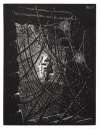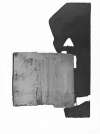Sol
Lewitt
Sol LeWitt, a pioneer of Conceptual and Minimalist Art, is recognised for his revolutionary approach which championed ideas over aesthetics. If you’re looking for original Sol LeWitt prints and editions for sale or would like to sell, request a complimentary valuation and explore our network’s most in-demand works.
Sol Lewitt art for sale
Discover Sol Lewitt prints for sale, exclusively available through our private network of collectors. Explore signed and unsigned screenprints, lithographs, digital prints, and rare editioned proof prints by era-defining blue chip artists.
Sell Your Art
with Us
with Us
Join Our Network of Collectors. Buy, Sell and Track Demand
Biography
Sol LeWitt, a pioneer of Conceptual and Minimalist Art, stands as a leading figure in the redefinition of art in the latter half of the 20th century. His influence stems from his innovative ideas about the creation and conception of art, redefining the role of the artist and the object in the artistic process.
Born in Hartford, Connecticut, in 1928, LeWitt attended the School of Visual Arts in New York City, where he developed his distinctive conceptual approach. LeWitt's early education and encounters with the burgeoning New York art scene significantly shaped his methodologies.
LeWitt's emphasis on the primacy of the idea over execution was foundational in the Conceptual Art movement. His Wall Drawings and Modular Structures exemplify his innovation, encouraging a participatory creation process and redefining the boundaries of artistic authorship.
LeWitt's artistic development was marked by a series of phases that defined his evolving ideas. In the 1960s, he began to explore the potential of Wall Drawing, a medium that would become synonymous with his name. These drawings, executed directly on the wall according to a set of instructions devised by LeWitt, questioned traditional notions of artistic authorship. The execution could be carried out by anyone following his precise guidelines, exemplifying his belief that the idea behind the artwork held more significance than the finished piece itself. Key works from this period, such as Wall Drawing #1136 (2004), highlight the ambition and complexity of his conceptual premise.
Collaboration was significant in shaping LeWitt’s artistic language. Interactions with fellow artists like Dan Flavin, Robert Ryman, and Eva Hesse shaped his intellectual and aesthetic pursuits. LeWitt championed a new way of understanding art's creation and perception. His theoretical writings, particularly Paragraphs on Conceptual Art, provided a manifesto for the movement, articulating his philosophy that the idea or concept is the most crucial aspect of an artwork.
Throughout his career, LeWitt participated in numerous major exhibitions, including a seminal retrospective at the Museum of Modern Art in 1978. His achievements were recognised through prestigious awards and the presence of his work in public collections worldwide. LeWitt's modular structures, characterised by their geometric forms and systematic construction, further explored themes of seriality and the separation of idea from execution.
Characterised by his conceptual approach, LeWitt emphasised the concept over the artefact, redefining the relationship between art and its audience. By encouraging the participatory installation process of his work, LeWitt decentred the artist’s position in the creation process and emphasised the importance of the artwork’s idea.































